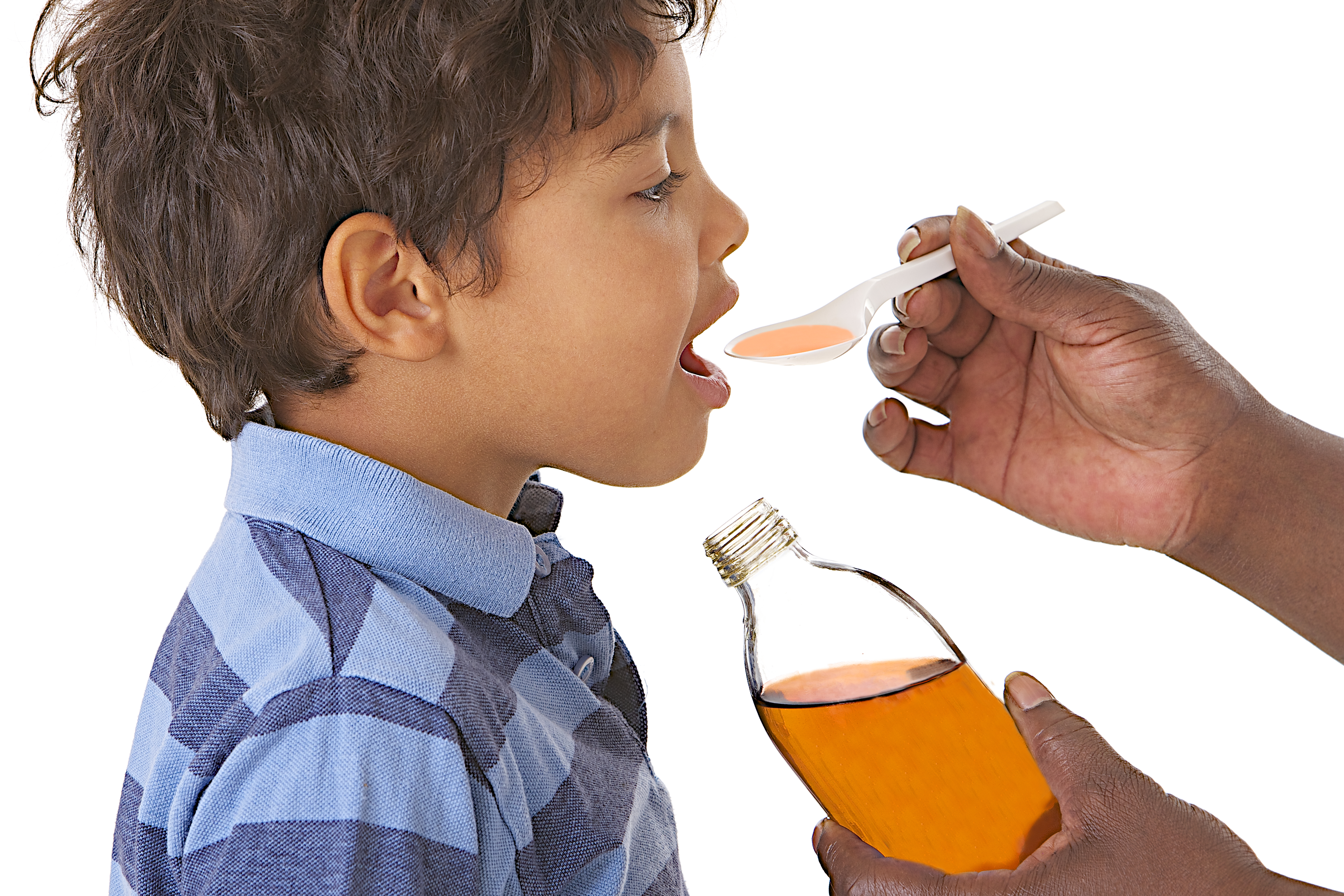 My Child Vomits Up His Medicine; What Do I Do? | Baby Arabia
My Child Vomits Up His Medicine; What Do I Do? | Baby ArabiaWarning: The NCBI website requires JavaScript to operate. Language: Silencio Vomiting of Oral Medications by Pediatric Patients: Survey of Medication Redosing PracticesAbstractBackground: At the time of this study, the pediatric tertiary care hospital of the authors had no policy of guiding actions when a child vomited after ingesting oral medications, and limited information was available in literature. Objectives: To characterize this clinical problem in the study hospital, to identify current practices related to drug redosing in the study hospital, and to compile guidelines and opinions of health professionals in other pediatric hospitals on this topic. Methods: Two online surveys were conducted, each for a period of 1 month at the end of 2010, to identify the current practices and views of pediatric health professionals about drug redoification after vomiting. E-mail distribution lists and health-care forums were used to hire participants. Results: Of the 76 responses of the study hospital, 65 were suitable for analysis. Many respondents reported that vomiting had been found after the administration of oral medications in a weekly basis (25 [38%]) or monthly (24 [37%]). Most respondents reported that they would follow a general rule to redo if vomiting occurred within 30 min (39 [60%]) or 15 min (21 [32%]) after initial ingestion. When respondents were asked to qualify the importance of 8 factors that could affect the decision to redose, more than half indicated that the time after dose ingestion (59 [91 per cent]), the type of medication (45 [69 per cent]), the state of the patient (39 [60%]), and the visibility of the drugs in vomiting (36 [55 per cent]) were very important. Of the 53 respondents to the health professionals survey in other institutions, 16 (30%) indicated that their pediatric hospital or pavilion had a guideline on redosing in cases of vomiting after the administration of oral medications. Most respondents (12/13 [92%]) stated that the guideline took into account the interval between initial ingestion and vomiting. Conclusions: The problem of vomiting after the administration of an oral medication was predominant in the study hospital, and the guidelines were scarce in other pediatric institutions. Health professionals in the study hospital and other institutions listed the time between ingestion and vomiting as the most important factor in the decision to remake the medication. In the context of the proceedings in question, Méthodes :Deux sondages en ligne ont été effectués, chacun sur une période d'un mois à la fin de 2010, afin de définir les pratiques et les actuelles des professionnels des soins de santé pédiatriques concernant la réadministration des médicaments après les vomissements. Des listes de diffusion par courriel et des forums de soins de santé ont servi à recruter les participants. Résultats :Des 76 réponses reçues à cet hôpital, 65 ont été retenues aux fins d'analyse. De nombreux répondants ont déclaré rencontrer des cas de vomissements après l'administration de médicaments par voie orale sur une base hebdomadaire (25 [38 %])) ou mensuelle (24 [37 %]). La plupart des répondants ont déclaré observer une règle générale voulant qu'on réadministre le médicament si l'enfant vomissait dans les 30 minutes (39 [60 %]) ou les 15 minutes (21 [32 %]) suivant l'administration initiale du médicament. En réponse à la question sur l'importance relative de 8 facteurs ayant une incidence possible sur la décision de réadministrer le médicament, plus de la moitié des répondants ont indiqué que le temps écoulé après l'ingestion du médicament (59 [91 %]), le type de médicament (45 [69 %]), l'39 La plupart de ces répondants (92 % [12/13]) ont déclaré que les lignes guidelines tenaient compte du temps écoulé après l'administration du médicament. Conclusions :Le problème des vomissements après l'administration de médicaments par voie orale était fréquent à cet hôpital et des lignes guidelines sur la conduite à tenir dans ces cas étaient disponibles dans seulement quelques autres hôpitaux pour enfants. Les professionnels de la santé de cet établissement et d'autres établissements ont déclaré que le temps écoulé entre l'ingestion du médicament et le vomissement était le plus important dans la décision d'administrer une nouvelle quantity du médicament. [Translation par l'éditeur]INTRODUCTION Children who have been admitted to the hospital may vomit at some point during their stay in the hospital, as a result of a wide range of problems and diseases, including acute gastroenteritis, adverse drug events, acute infection and food poisoning. In addition, vomiting or regurgitation often occurs in babies otherwise well outside the hospital. The clinical meaning of vomiting after the administration of an oral medication varies, depending on the nature of the symptoms and the disease involved, the therapeutic index of the medication, the formulation of medicines (tabla, suspension or formulation of sustained release), the pharmacokinetics of the medication, and the time between dosage administration and emesis. There is very little information available in the literature to suggest what action health professionals should take in cases where a child vomits after the administration of oral medications. Topics of 3 newsletters, the Canadian Pharmaceutical Charter, the Nevada News State Pharmacy Board and the Department of Pharmaceutical Care of Hospitals and Clinics of the University of Iowa have recently submitted recommendations to redouble oral medications after vomiting. The consensus is to read the medication if it is visible in vomiting or if vomiting has occurred within 15 minutes after dose ingestion.– These newsletters stressed that redoing decisions should be taken on a case-by-case basis, taking into account the risk of ill-treatment from the risk of toxic effects, the therapeutic index of the medication, the type of medication (e.g., liquid, short action, prolonged action), and the duration of the treatment (e.g., short or long term). However, none of the recommendations contained in these newsletters was specific to pediatric patients. At the time of publication, in mid-2012, the British Columbia Centre for Child and Women ' s Health, a pediatric centre for tertiary care, did not have formal policies to direct nurses, pharmacists or doctors in case of vomiting after the ingestion of an oral medication, specifically with regard to whether the medication should be redominated. It seems that there is only a general consensus that medicines should be administered if emesis occurs within 15 minutes after dose ingestion and should not be readmitted if emesis occurs more than 60 minutes after ingestion, with individual decisions taken case by case. In order to determine the factors affecting clinical decisions on drug readmission after vomiting in pediatric patients, health professionals surveys were conducted in the institution of the authors and in other pediatric hospitals. The specific objectives of the study were to characterize this clinical problem in C plagueW, as reported by health professionals; to identify the current practice of drug redoubling in C harvestW; and to compile guidelines and opinions of health professionals in other pediatric hospitals in relation to drug readmission after vomiting. METHODS Two online voluntary, anonymous and self-administered surveys were used to identify current practices and views of nurses, pharmacists and doctors working in pediatric hospitals, specifically to remake oral medications when vomiting occurs after their initial administration. The online survey software (SurveyMonkey) provided the results as aggregated and unidentified data (i.e., not linked to a particular or respondent email address). The approval of an investigation ethics board was not requested, nor did the study institution require it, since the surveys did not involve patients or their families. The first survey (see Appendix 1, available online in ) was specific to health professionals who practiced in C plagueW and was conducted for a period of 1 month (November to December 2010). An invitation to participate in the survey, with a link embedded with the online survey, was sent by e-mail (using institutional distribution lists) to potential surveyed pharmacy and nursing; the number of invitations sent by this method is unknown. Email distribution lists for CENTW doctors were not available to researchers, so individual doctors (paediatricians and specialists) were contacted directly by e-mail with a request for participation. The survey for C-Pest personnel contained specific questions about current practice, as well as 6 clinical scenarios. Respondents were asked to evaluate the importance of the following 8 factors in the clinical decision to remake an oral medication after emesis: time after initial dose ingestion, type of medicine, state of patient, visibility of vomiting medications, familiarity of the health care professional with the medication, form of dosage, volume of vomiting and age of patient. The respondents used a 5-point scale of Likert (where 1 = not important, 3 = something important, and 5 = very important) to evaluate the factors. The 6 clinical scenarios presented details about the patient's age, the drug and dose regimen, the time for emesis and the visibility of the medication in vomiting. One scenario served as a "baseline", with a factor that was altered in each of the other scenarios. Respondents were asked if they had found a similar situation in the past, whether they should readmit the medication and, if so, why they would take that measure. The scenarios were aimed at obtaining more information on the influence of these factors in a simulated clinical environment. The second survey (Appendix 2, available online in ) was opened (for a period of 1 month, from November to December 2010) to health professionals in other Canadian and American pediatric hospitals, as well as pediatric pharmacists who practice in adult hospitals. The survey was published in professional health care forums, including those of the Canadian Society of Hospital Pharmaceuticals, the American College of Clinical Pharmacy, mmp livesBench, the Chemotherapy and Biotherapy Instructors of the Association of Hematology/Oncology Pediatric Nurse Educators, and the Canadian Oncology Nurse Educators Group. This survey asked questions about the presence of guidelines and recommendations, as well as the perceived practice, in the defendant's hospital. If a guideline was available, the survey requested information on the characteristics of the guideline, which of the 8 possible factors (listed above) were taken into account in the guideline and any reference used in the development of the guideline. If no guideline is available, information is requested on the common practice in the defendant ' s hospital through open questions. RESULTSSurvey of Local Hospital Practitioners 76 responses were received from pharmacists, nurses and doctors of C pestW, of which 11 were incomplete, except demographic data and were therefore excluded. The analysis included the remaining 65 responses. Nurses represented most C.C.T. respondents, and most respondents worked in the general pediatric area (). Table 1.Features of respondents to the health professionals survey at the hospital for children and women in British ColumbiaFeatureNo. (%) of respondents* (nn. = 65)Profession Nurse49 (75) Pharmacist12 (18) Physician2 (3) Other2 (3) Average clinical experience (years)11.2 Emergency Clinic Area5 (8) General Pediatrics31 (48) Intensive Care3 (5) Neurosciences and Surgery6 (9) Oncology2 (3) Post-ansthetic Care6 (9) Renal, endocrine and metabolic6 (9) Other6 (9) Most respondents indicated that they had found the problem of vomiting after the administration of oral medications either weekly (25/65 [38%]) or monthly (24/65) Most of the other respondents (15/65 [23 per cent]) had never found the problem, and only 1 respondent (2 per cent) found it daily. The problem was most often observed in patients aged 1-4 years (22/50 [44%]) or less than 1 year old (13/50 [26%]). Most respondents reported that in cases of vomiting after the oral administration of drugs, they would do the medication again according to a general rule based on the time elapsed between ingestion and vomiting: either within 30 minutes (39/65 [60%]) or within 15 minutes (21/65 [32%]). The remaining 5 (8%) of respondents indicated that they would not follow a general rule, and no respondent indicated that a general rule would be applied to redo if vomiting occurs within 1 h after ingestion. The respondents valued the importance of 8 factors affecting the clinical decision to remake oral medications after emesis on a 5-point scale of Likert, and 4 of these factors received a 5-point rating (indicating "very important") for more than half of the respondents: time after dose ingestion, type of medication, patient status and visibility of the drugs in vomiting (). For all 4 of these factors, the average value was higher than 4 (). Table 2.Importance of factors that affect the decision to redo an oral medication after voting among health professionals in the infant and female hospital of British ColumbiaFactorNo. (%) Rating factor as very important* (n = 65)Total rating of the importance† (Mean ± SD)Time after dose ingestion59 (91)4.8 ± 0.8Medication type 45 (69) More than half of the respondents had encountered situations similar to those of the first 5 of the 6 clinical scenarios described in the survey (), but only 12 (21%) of 57 respondents had found a situation similar to scenario 6. For each of the 6 scenarios, at least 60% of the respondents had the same clinical decision on drug redosing (). Of the factors that potentially affect the decision to remake, the time after dose ingestion was taken into consideration more frequently, while the age of the patient was taken into consideration less frequently. The extent to which the type of medication affected the clinical decision varied greatly among the 6 clinical scenarios. Most respondents considered this factor for stage 6, where the medication was protracted morphine. (percentage) (percentage) 53 responses were received from other institutions, of which 47 were complete. The analysis included the 6 partially completed responses. Sixteen (30%) of respondents indicated that their pediatric hospital or pavilion had a guideline, protocol and/or recommendation on what to do in case of vomiting after ingestion of oral medications. Most of these guidelines were specific to care or service (9 [56 per cent]); 3 (19 per cent) were hospitable, and 2 (12 per cent) were specific medicines. Thirteen respondents provided further details on their respective guidelines (). Most indicated that their guidelines represented time after dose ingestion; other factors were considered varied. None of the guidelines took into account the condition of the patient or the familiarity of the healthcare provider with the medication. Of the guidelines used in the institutions of the respondents, only 3 had supporting references: 1 guideline was based on a specific practice recommendation for oncology, and 2 guidelines were based on the article of the Canadian Pharmaceutical Charter. Only 2 respondents presented the guidelines of their institutions along with the survey response; in both cases, the guideline consisted of the Canadian Pharmacist Charter article. Table 4.Factors Directed in Guidelines of other pediatric institutions, as reported by survey RepliesFactorNo. (%) of Guidelines Direction factor (n = 13)Time after dose ingestion12 (92)Type medication4 (31)Patient status0 (0)Visibility of drugs in vomiting4 (31) Personality of the health care professional with drugs0 (0)Dosage form2 (15) Of these, the majority (22 [59 per cent]) indicated that the dose would be repeated if vomiting occurs within a specific time frame. Other respondents indicated that their decision would be based on professional judgement (19 [51 per cent]) or that they would contact the prescriptor (11 [30%]). DISCUSSION The problem of vomiting after the administration of oral drugs in children was predominant in the institution of the authors, and 75% of the respondents reported that they were in the weekly or monthly problem. Despite the prevalence of this problem, there is a lack of evidence-based studies and recommendations on the best course of action (specifically, when to redo the medication). The most complete recommendation published, which is found in the Canadian Pharmaceutical Charter and based on expert opinion, indicates that the tablet or capsule can be readmitted if it is visible in the vomit or if the vomit occurred within 15 min of ingestion. The recommendation also states that the decision should be taken on a case-by-case basis, taking into account the potential risk of losing a dose. In designing the surveys used in this study, we were interested in factors that influence the decisions of health professionals on the course of action to be taken when a pediatric patient vomits a dose of oral medications. We asked about factors that were considered in the published recommendations that we identified, as well as factors that we thought might be specific to pediatric patients or for hospitalized patients. In the study of current practice in C plagueW, the most important factors that health professionals used to decide on redosing were time after ingestion, type of medication, state of the patient and visibility of medication in vomiting. The familiarity of the caregiver with the medication, the form of doses and the volume of vomiting were less important, and the patient's age was minimally important. Curiously, in the survey of health professionals in other pediatric and pharmaceutical institutions, the guidelines, if they are present, did not consider the patient's familiarity or caregiver with the medication. However, most of the guidelines considered the time after dose ingestion, and about a third considered the type of medication and the visibility of the medication in vomiting. The difficulty of making a specific recommendation on the best course of action after a pediatric patient has vomited a dose of medications is probably derived from the diverse nature of patients, their diseases and the medications themselves. Many health professionals from the institution of the authors, as well as those from other pediatric hospitals, reported following a general rule based on the time of administration of doses to vomits to decide whether to administer a medication, but this approach cannot always be appropriate. For example, the redose of a liquid medication if vomiting occurs within 30 minutes after ingestion may not be appropriate for all patients, as there is a lack of information about the gastrointestinal transit time and the time of gastric emptied for various forms of dosage in children. In particular, it is thought that the time of gastric emptied for milk is 30 to 120 min, depending on the age of the child and the type of milk. Among health professionals who claimed that they followed a general rule based on the time of vomiting in relation to dose management, clinical trials also appeared to be used. The type of medication was considered the second most important factor in a decision to remake a vomiting medication. The indication for the medication, the therapeutic window, pharmacokinetics and pharmacodynamics of the drug, the possible adverse effects and the dosage interval are all factors that could be considered in the general topic of the "type of medicine". The information gathered in this study was subject to the limitations inherent in survey studies, such as the potential for memory bias, as well as the specific limitations to the design and distribution method for these particular surveys. Surveys were not validated or tested before being used in the study. The information collected in both surveys was limited because we did not always allow respondents to provide a written response, inciting them instead with check boxes. The 6 scenarios were closely related (each variable in a sense of a reference scenario), which could have led respondents to respond differently than they would behave in practice if each scenario had been an independent fact. The C pestW staff survey had few doctors surveyed, which was probably due, at least in part, to the lack of availability of an e-mail distribution list for doctors. This limitation may have led to a selection bias. For the survey of other pediatric hospitals and pediatric pharmacists, the survey was published in several health care forums, rather than being sent directly to individual pediatric hospitals. We focused mainly on forums for pediatric pharmacists and oncology nurses, as these were the forums we had access to. Not using general pediatric nursing forums or pediatric medical forums probably led to more selection bias. We do not know if there were multiple responses from one institution, nor do we know how many and which institutions were not represented by the respondents. Nor do we know whether the respondents of institutions that had specific guidelines for care or medication were necessarily aware of those guidelines. Some respondents did not answer all questions, which is a common problem in survey studies. Furthermore, because of our dependence mainly on the e-mail distribution lists and health-care forums, we do not know how many guests to participate were sent, and therefore we cannot calculate a response rate for any survey. For the survey of other hospitals, respondents reported that they would normally contact the prescriptor in the case of a vomited dose. Therefore, a next step in the study of this problem could be the study of prescriptors directly to determine what factors they consider when deciding whether a medication should be redosed. It may also be useful to ask health prescribers and practitioners about perceived knowledge gaps and the information or training that would help them make the decision to remake a medication. CONCLUSIONS More than three quarters of health professionals who responded to a survey in the authors' institution reported that they faced the vomiting problem after the administration of a weekly or monthly oral medication. It was reported that this problem was most often presented in children aged 4 or younger. Among health professionals in the institution of the authors, the time between dose intake and vomiting seemed to be the most important factor in the decision whether or not to administer the medication; however, the time spent on this decision was not consistent among the respondents. Health professionals in this institution also list the type of medicine, the state of patients and the visibility of the medications in vomiting as important factors in their decision. Less than a third of health professionals from other institutions responding to the survey reported that their institution had a guideline that provided leadership in this situation. The factors most often addressed in these guidelines were the time between dose intake and vomiting, the type of medication and the visibility of the medications in vomiting. In the absence of a guideline in their respective hospitals, health professionals reported that their decision on whether to redo a drug after vomiting was based on a certain time elapsed or on their professional judgment. The risk of therapeutic failure if a dose is not given, but has not been absorbed (by vomiting) should be weighted against the risk of toxic effects if the dose is read when absorbed (before vomiting occurs). This decision should probably be taken on a case-by-case basis for pediatric patients; however, health professionals may find it useful to have a decision-making algorithm or a list of factors to consider. We plan to provide education to health professionals and create a guidance document for their use in our pediatric institution, highlighting the factors to consider when deciding on the best course of action for patients who have vomited a dose of medication. ReferencesFormats: Share , 8600 Rockville Pike, Bethesda MD, 20894 USA
If a child vomits after taking medications, does the dose need to be repeated? Answer by: Dr. Anju Seth TOP Professor of Pediatrics, LHMC, New DelhiQ: My son is 4 years old. He has some episodes of attacks. It's in the Dilantin syrup, 4 ml a day. I want to know how long it takes to digest the syrup? If you vomit within a specified time do I need to repeat the dose? Q:do I need to repeat the doseA:As a general principle, if vomiting occurs within half an hour of taking a medication, or if vomiting reveals part of the ingested drug, the dose of drugs should be repeated. A:RELATED FAQTrending......................... Publicity............... Announcement...............Home remediesFAQASK OUR EXPERTSTrending Topics The best stories... . Announcement... googletag.cmd.push(function) { googletag.display('adslot728x90BTF'); });

Mistakes Parents Make When Giving Medicine to Kids - Best Way to Medicate Kids
What to do When Your Child is Vomiting
Throwing Up Panadol - Is It Safe To Give it Again? | BellyBelly
Kids and Throwing Up: Should You Worry? - CHOC Children's Blog
Why Do Kids Vomit So Much? (And When Should You Be Worried?) : Shots - Health News : NPR
Vomiting in Toddlers - Causes, Prevention & Home Remedies
Vomiting: A Symptom Guide | Parents
Vomiting in Children: Reasons, Signs & Home Remedies
Vomiting in children (ages one to five): what's normal and what's not - BabyCenter Australia:max_bytes(150000):strip_icc()/black-mother-giving-son-cough-syrup-152400847-595570bd5f9b5815d90e1594.jpg)
Phenergan Drug Warning in Children
Baby Vomiting After Feeding Formula: Causes and Treatment
Vomiting in children and teenagers | Raising Children Network
What should I do if my baby throws up right after I give her antibiotics? | BabyCenter
Vomiting and Reflux in Babies| Causes, Symptoms and Treatment | Emma's Diary
Baby Vomiting No Fever: Why This Happens and What to Do
How to Stop Vomiting | Parents
Child Vomiting at Night but Fine During Day: Causes, Treatment
Vomiting in babies: what's normal and what's not - BabyCenter India
Spitting up and vomiting
Throwing up in toddlers and children: Why kids vomit and what to do | BabyCenter
Vomiting
How Do You Know When Your Kid's Over a Cold or the Flu?
How to recognize and safely treat acid reflux in babies/how-to-stop-throwing-up-tips-and-treatments-770364_FINAL-5c05c29b46e0fb0001f4ca0c.png)
Treatment for How to Stop Throwing Up
Vomiting 101: Why You Throw Up and the Best Way to Recover – Health Essentials from Cleveland Clinic
Teething and vomiting: Is it normal?
Nine Stress-Free Tips for Giving Your Child Medicine
Stomach Flu Remedies for Kids - Children's Health
Diarrhoea and vomiting in children | healthdirect
How to Stop Vomiting: 7 Tips and Remedies/GettyImages-465006019-570361f85f9b581408ac8817.jpg)
How to Deal With Frequent Vomiting in Toddlers
Vomiting in Children | Ask Dr Sears
How Well Do You Know Children's Medicine?
Types of Vomiting in Babies and Toddlers: How to Help a Child Who Is Throwing Up/mother-giving-penicillin-medicine-to-his-sick-baby-boy-868327932-d8b0a02129dd40759d27377cb5b46d22.jpg)
Common and Serious Antibiotic Side Effects in Children
Antiemetics for Nausea and Vomiting: Types and Side Effects/GettyImages-1074273996copy-1b9e26416a474a42b593bbafcb9ebb65.jpg)
Baby Dehydration: Definition, Symptoms, Causes, Treatment
Vomiting: A Symptom Guide | Parents
Teething and vomiting: Is it normal?
When to Take a Vomiting Child to the Doctor | University of Utah Health
 My Child Vomits Up His Medicine; What Do I Do? | Baby Arabia
My Child Vomits Up His Medicine; What Do I Do? | Baby Arabia








:max_bytes(150000):strip_icc()/black-mother-giving-son-cough-syrup-152400847-595570bd5f9b5815d90e1594.jpg)













/how-to-stop-throwing-up-tips-and-treatments-770364_FINAL-5c05c29b46e0fb0001f4ca0c.png)






/GettyImages-465006019-570361f85f9b581408ac8817.jpg)


/mother-giving-penicillin-medicine-to-his-sick-baby-boy-868327932-d8b0a02129dd40759d27377cb5b46d22.jpg)

/GettyImages-1074273996copy-1b9e26416a474a42b593bbafcb9ebb65.jpg)


Posting Komentar untuk "if a child vomits after taking medication"